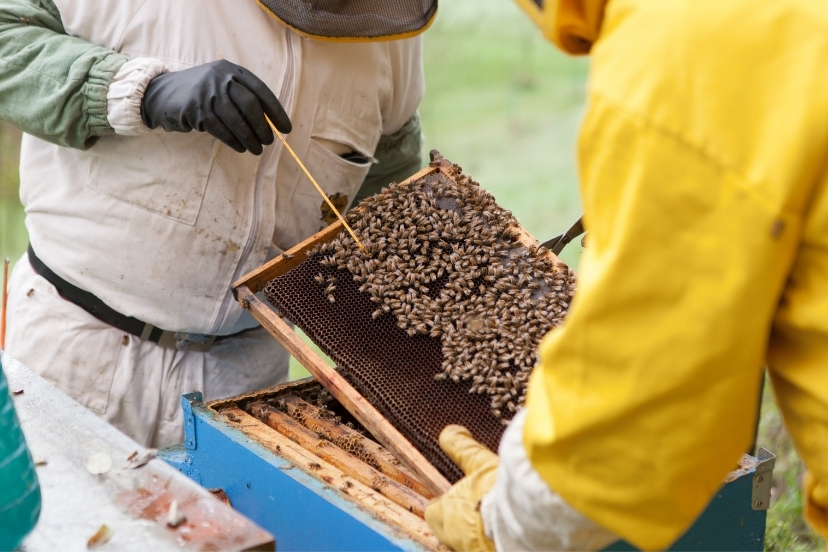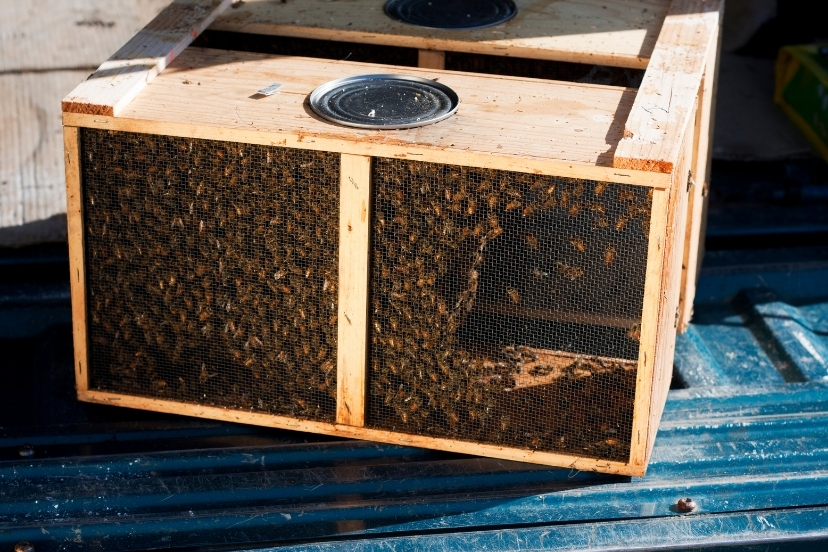The art of beekeeping has been revolutionized by evolving technologies, and the heart of this innovation is the honey extractor.
For honey enthusiasts dreaming about a bountiful harvest without upsetting their buzzy little friends, choosing an ideal honey extractor can be the difference between sweet success and sticky trouble.
This guide promises to decode the complex maze of choices and help you find perfect match for you. Whether you are ahobbyists just dipping your toes into the world of apiculture or seasoned apiarists looking to upgrade your existing setup.
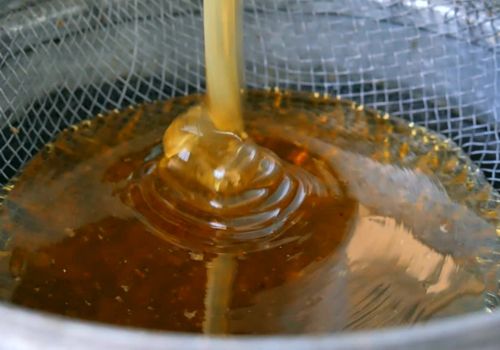
Grab your bee suits and let’s hive into the world of honey extractors!
When choosing a honey extractor, there are several factors to consider. Firstly, determine your budget and space availability. Next, consider the size of your operation and the number of hives you have. Lastly, decide between manual or electric extractors and tangential or radial basket designs based on your preferences and efficiency requirements.
Our website provides detailed information and recommendations to help you make an informed choice.
Types of Honey Extractors: Manual vs Automatic
When it comes to selecting a honey extractor, one of the primary decisions beekeepers need to make is whether to opt for a manual or an automatic extractor. Both options have their advantages and considerations to keep in mind.
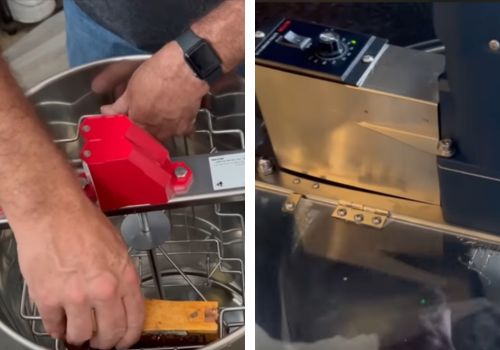
A manual honey extractor is generally more affordable and straightforward in its design. It typically features a hand crank that requires the beekeeper to manually rotate the frames inside the extractor, using centrifugal force to extract the honey.
This type of extractor is ideal for small-scale operations or beekeepers who prefer a more hands-on approach.
Imagine you are a hobbyist beekeeper with just a few hives. A manual honey extractor would be a suitable choice as it provides you with control over the extraction process while being cost-effective.
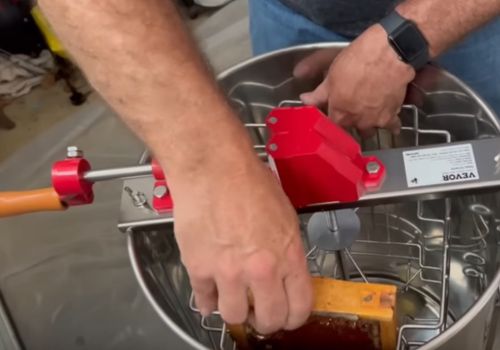
On the other hand, an automatic honey extractor offers convenience and efficiency. Equipped with an electric motor, it eliminates the need for manual labor.
With just the press of a button, the frames start spinning, extracting honey quickly and efficiently. This type of extractor is ideal for commercial beekeepers who manage larger quantities of frames or those seeking a time-saving option.
Mary, a full-time beekeeper with dozens of hives, decided to invest in an automatic honey extractor after realizing the amount of time and effort she was spending on manual extraction. The automatic feature significantly reduced her workload during the busy harvest season, allowing her to focus on other aspects of her beekeeping business.
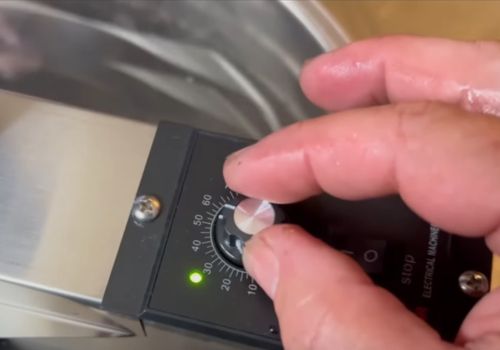
Ultimately, the choice between manual and automatic honey extractors depends on factors such as budget, scale of operations, and personal preference. Consider your specific needs and goals as a beekeeper when making this decision.
Operation and Ease of Use
Another crucial aspect to consider when choosing a honey extractor is its operation and ease of use. Beekeepers should aim for an extractor that simplifies the honey extraction process while being efficient and user-friendly.
Ease of assembly and disassembly is an important consideration. Look for extractors that are easy to set up before honey extraction and straightforward to take apart afterward for cleaning and maintenance.
Smooth and simple processes can save time, especially during the busy harvest season.
The capacity of the extractor is vital. The capacity refers to the number of frames that can be accommodated in the extractor at one time.
Consider the number of hives you have or plan to expand to in the future when determining the appropriate capacity for your extractor.
An essential feature to look out for is stability. A stable honey extractor ensures that it remains firmly in place during operation, preventing any unnecessary wobbling or vibrations that could disrupt the extraction process.
This stability also contributes to safety for both the beekeeper and the equipment itself.
Lastly, consider the durability and build quality of the honey extractor. Beekeeping equipment should withstand regular use, especially during intense harvesting periods.
Opting for a sturdy and well-built extractor will ensure its longevity, saving you from having to replace or repair it frequently.
As a beekeeper, finding an extractor that not only simplifies the extraction process but also provides ease of use is crucial for maximizing productivity and overall efficiency.
Features to Consider
When it comes to choosing a honey extractor for your beekeeping needs, there are several important features to consider.
These features can greatly impact the efficiency and ease of extracting honey, so it’s essential to make an informed decision.
Firstly, as we already discussed above you’ll want to consider the type of honey extractor: manual or electric. A manual honey extractor operates with a hand crank, making it more affordable but requiring some physical effort on your part.
On the other hand, electric extractors use an electric motor for faster extraction, which can be beneficial for larger operations or those with limited physical capability.
Another crucial feature is the basket design of the honey extractor: tangential or radial. Tangential extractors extract honey from one side of the frame, requiring flipping for complete extraction.
This design works well for hobbyist beekeepers and smaller operations. In contrast, radial extractors can extract honey from both sides of the frame simultaneously, making them more efficient for larger beekeeping operations.
Let’s say you have several hives and need to extract honey efficiently within a limited time frame. An electric honey extractor with a radial basket design would be a suitable choice as it allows for quick and complete extraction without the need for manual flipping.
The size and capacity of the honey extractor is another vital consideration. Generally, a larger extractor will allow you to process more frames at once, saving time during extraction.
However, it’s important to factor in cost, space constraints, and your specific hive count.
With that in mind, let’s explore how you can choose the right extractor size based on your hive count.
Choosing the Right Extractor Size based on Hive Count
The right extractor size depends primarily on how many hives you have. As a general rule of thumb, the number of frames an extractor can handle should be around double the number of hives it can accommodate comfortably.
This ensures that you can extract honey from all the frames without needing to do multiple extraction cycles.
For beekeepers with a small number of hives, such as 1 to 5, borrowing a 2-frame extractor from another beekeeper may be a feasible option.
However, it’s important to consider the potential risks of disease or parasites that could be introduced through borrowed equipment.
If you have more than 5 hives or wish to have your extractor for long-term use, investing in the best extractor you can afford is recommended.
A used Kelly 33 frame extractor is often recommended within the beekeeping community due to its durability and capacity.
Consider the case of a beekeeper who manages 15 hives. Investing in a large-capacity extractor, such as a 20-frame extractor, would streamline their honey extraction process and provide sufficient room for future hive expansion.
While DIY options are available for honey extractors, ready-made extractors are generally preferred for convenience and longevity. It’s crucial to assess your needs and prioritize quality when choosing an extractor.
Some beekeepers may argue that a hand crank extractor can still suffice for smaller operations with less than full frames, especially if cost is a significant concern.
However, it’s essential to strike a balance between practicality and efficiency, considering factors like time and physical effort involved.
Now that we’ve explored the features to consider and how to choose the right extractor size based on hive count, let’s dive deeper into the relationship between size and capacity.
Size and Capacity Relationship
When it comes to choosing a honey extractor, one crucial factor that beekeepers must consider is the relationship between size and capacity.
The size of a honey extractor refers to its physical dimensions, while the capacity refers to the number of frames it can accommodate for extraction.
It’s important to strike the right balance between these two aspects to ensure efficient honey extraction while considering factors such as cost, space availability, and time.
Beekeepers with smaller operations or hobbyist beekeepers may find that a compact honey extractor fits their needs perfectly.
These smaller extractors are often able to handle 2 to 4 frames at a time, making them suitable for those who have only a few hives. Not only are they more affordable, but they also require less space for storage.
For example, an entry-level 2-frame honey extractor can easily fit into a small shed or garage.
On the other hand, commercial beekeepers or those with larger-scale operations might opt for honey extractors with higher capacities. These extractors can handle 8 frames or more, allowing for faster extraction and increased productivity.
While these extractors are typically more expensive and require a larger storage area, they significantly reduce the time needed for harvesting honey from numerous hives.
This efficiency can be especially beneficial during peak honey flow seasons when time is of the essence.
Ultimately, the ideal size and capacity of a honey extractor depend on the specific needs and circumstances of each beekeeper.
It’s important to assess factors such as the number of hives in operation, available budget, available space for storage, and time constraints before making a decision.
Choosing the right size and capacity relationship is like selecting the right tool for a job – too small, and you’ll be limited in what you can accomplish; too big, and you may end up with unnecessary expenses or wasted space.
Finding the balance that suits your needs best will ensure a smooth honey extraction process.
- According to a survey conducted by the American Bee Journal in 2020, nearly 70% of beekeepers reported using manual extractors for their operations.
- The same survey revealed that approximately 50% of beekeepers with up to ten hives found 2-frame extractors sufficient for their needs.
- In another report by Bee Culture magazine, radial extractors are preferred by 65% of medium to large scale beekeepers due to their efficiency in extracting honey from both sides of the frame without flipping.
Material Considerations in Honey Extractors
When investing in a honey extractor, considering the materials used is of utmost importance.
The choice between stainless steel and plastic parts can greatly impact the durability, ease of cleaning, and overall lifespan of the extractor.
Let’s explore these material considerations to help you make an informed decision.
Stainless steel honey extractors are highly favored by many beekeepers due to their superior durability and resistance to corrosion.
Stainless steel is known for its sturdiness, making it capable of withstanding the rigorous demands of regular use.
They are much easier to clean, ensuring that no residual honey or wax remains after each use. This makes maintenance hassle-free and contributes to a longer lifespan for the extractor.
“I’ve been using a stainless steel honey extractor for over five years now, and it still looks as good as new. The material’s durability is impressive, and I’ve found that cleaning it after each use is a breeze.” – Experienced Beekeeper
On the other hand, some beekeepers prefer honey extractors with plastic parts due to their lower cost and lighter weight.
Plastic extractors can be an ideal choice for beginners or those on a tighter budget. It’s important to note that plastic parts may not be as durable as their stainless steel counterparts.
They may be more prone to cracking or warping over time, especially if they are subjected to frequent use or exposure to high temperatures.
That being said, there are high-quality plastic honey extractors available on the market that are specifically designed for longevity and durability.
These extractors are often made from food-grade polypropylene or ABS plastic, which ensures they can withstand the demands of extraction without compromising on performance or integrity.
When deciding between stainless steel and plastic parts for your honey extractor, weigh the factors of durability, ease of cleaning, budget, and personal preferences. Both options have their advantages and considerations to keep in mind.
Stainless Steel vs Plastic Parts
When choosing a honey extractor, one crucial consideration is whether to opt for stainless steel or plastic parts. Both materials have their advantages and disadvantages, and selecting the right one depends on your specific needs and preferences.
Stainless steel, known for its durability and longevity, is a popular choice among beekeepers. It can withstand the rigors of extracting honey without succumbing to wear and tear easily. Stainless steel parts are less likely to crack or break, ensuring reliability for years to come. Additionally, stainless steel is resistant to rust and corrosion, making it an excellent option for those who prioritize hygiene and cleanliness in their honey extraction process.
Imagine this scenario: You’re an avid beekeeper with multiple hives, and you need an extractor that can handle large volumes of honey extraction over time. In such a case, opting for stainless steel parts would be wise as they can endure the repetitive use without compromising performance or quality.
On the other hand, plastic parts offer their own set of advantages. They tend to be more affordable compared to stainless steel options, which makes them attractive for hobbyist beekeepers or those on a budget. Plastic parts are also lightweight, making them easier to carry and maneuver during the honey extraction process. Moreover, since plastic is non-reactive, there’s no risk of altering the flavor or quality of your harvested honey.
However, it’s essential to note that plastic parts may not be as durable as their stainless steel counterparts. Over time, repeated use might lead to cracks or structural damage. This could result in the need for replacement sooner than expected, potentially adding additional costs down the line.
When deciding between stainless steel and plastic parts for your honey extractor, think about factors such as the scale of your beekeeping operation, budget constraints, and desired lifespan of the equipment. Weigh these considerations carefully before making your choice.
Now that we have discussed the different considerations regarding stainless steel and plastic parts, let’s move on to another critical aspect of honey extractor ownership: maintenance and cleaning.
Maintenance and Cleaning of Extractors
Proper maintenance and regular cleaning of your honey extractor are crucial for optimal performance and longevity. Neglecting these tasks can lead to clogged or damaged equipment, affecting the quality of your extracted honey. Here are some essential steps to keep in mind when maintaining and cleaning your honey extractor:
- After each use, thoroughly clean all parts of the extractor using warm water and a mild detergent specifically made for beekeeping equipment. Pay close attention to any crevices or hard-to-reach areas where leftover honey or debris may accumulate.
- Inspect the extractor for any damages such as cracks or loose fittings. Address any issues promptly to avoid further complications or safety hazards during future use.
- Regularly lubricate moving parts such as gears or bearings with food-grade lubricant to ensure smooth operation.
- Store your honey extractor in a cool and dry place to prevent moisture buildup, which can lead to rust or corrosion.
- Consider investing in a stainless steel honey extractor, as it generally requires less maintenance compared to plastic models. Stainless steel is easier to clean, more resistant to staining, and less prone to retaining odors.
Let’s say you’ve just finished extracting honey from your bee hives and are preparing to clean your honey extractor. By following these maintenance steps diligently, you can remove any residual honey, prevent clogs, and ensure that your equipment remains in top condition for future use.
Remember, proper maintenance not only helps prolong the lifespan of your honey extractor but also ensures that your harvested honey maintains its quality and purity throughout the process.

